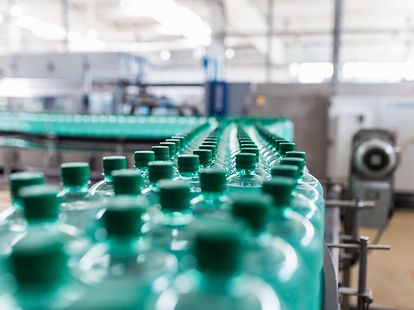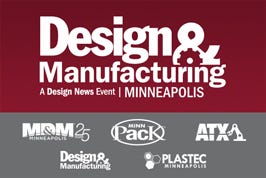“Batch-of-One” and “Ease-of-Use” – The Top Keywords at PackExpo
The twin themes of this year’s PackExpo packaging tradeshow were ease-of-use and mass customization. These long sought-after goals are here today, and they were on display at PackExpo.
September 27, 2019

At the Omron booth, Keith Kersten, marketing communications manager, scanned my show badge into a laser printer, and it produced a tin can with my name and Omron’s logo onto the tin. It could have been one item on a long list of items with different material and a range of colors.
|
Mass customization and ease-of-use manufacturing automation were on display at PackExpo. (Image source: Emerson) |
ueAt the Honeywell booth, Joseph Lui, VP and GM of robotics, computer vision, and artificial intelligence, pointed to a fully operable packaging line with mobile robots bringing products to the palletizer while fixed robots packed the boxes onto pallets. On the way to the pallets, a roller machine oriented the boxes so the logo faced outwards when the boxes were stacked on the pallet. Lui explained that this whole operation was configured that morning.
Over at the Siemens booth, Colm Gavin, digitalization specialist for factory automation, demonstrated an operation where different sized bottles were produced on the same line, and this mass customization was configured without the need for a team of programmers.
There it is, a batch of one tin, a multi-robot packing operation, and a customized production line put together without programming. Welcome to the manufacturing promise of Industry 4.0: automated batch-of-one production and a multitask production line configured by anybody. You or me.
The Elusive Goal of Mass Customization
I remember the “mass customization” term from the 80s, when marketers were talking about creating products individualized for each consumer. While sales and marketing understood the importance of the concept, the possibilities were not supported by manufacturing. Products could be personalized, but only at a premium that took the “mass” out of customization.
Advances in manufacturing equipment over the past few years have changed that story. A number of changes in production equipment have contributed to the ability to produce a “batch of one.” Production equipment is more flexible. Many manufacturing lines can be altered through computer instructions rather than by taking the equipment apart and reconfiguring it.
Computing has become faster and storage is cheaper, so manufacturing execution systems (MES) are better able to manage batches and communicate with the equipment in realtime. Thus, instructions on manufacturing changes can be coordinated with calls for changes in supplies.
To get a good idea of how these changes affect consumer products, just take a look at the variety of Oreos at your local market. You may also notice a difference in the packaging for Walgreens, Walmart, and Kroger. Mass customization allows each store to choose an optimized container its consumer products. At Walgreens the packages are smaller, since customers are not buying family groceries at their pharmacy. Walmart packaging is larger since the customer is buying for the family.
All of the equipment to make this possible was on display at PackExpo.
Configuring a Robot from Scratch
Equipment available now lets you build your manufacturing line without a permanent programmer. I received a first-hand look at the Yaskawa booth. Michael Castor, product manager for material handling, asked if I had ever programmed a robot. When I answered, no, he gave me an HMI about the size of a tablet and explained what button moved the robot up/down, right/left, forward/backward, and then he showed me how to tell the robot to remember the motions I requested. Within seven or eight minutes I had taught the robot to pick up an object and move it another spot. I could replicate the task over and over.
RELATED ARTICLES:
These are tiny examples, but they illustrate a shift in the world of manufacturing. “Batch-of-one” and “ease-of-use” are no longer coming trends. These long-desired goals of manufacturing are demonstrable, and they are no longer the sole property of the top 10% of large companies that can afford to invest in edgy new tech. We’re seeing the beginning of the democratization of advanced manufacturing.
Rob Spiegel has covered automation and control for 19 years, 17 of them for Design News. Other topics he has covered include supply chain technology, alternative energy, and cyber security. For 10 years, he was owner and publisher of the food magazine Chile Pepper.
The Midwest's largest advanced design and manufacturing event! |
About the Author(s)
You May Also Like




.jpg?width=300&auto=webp&quality=80&disable=upscale)


